If you are caring for an orchid, you already know that these pretty plants can be a little temperamental. Keep it happy with this simple DIY orchid humidity tray. It’s simple to make and really works!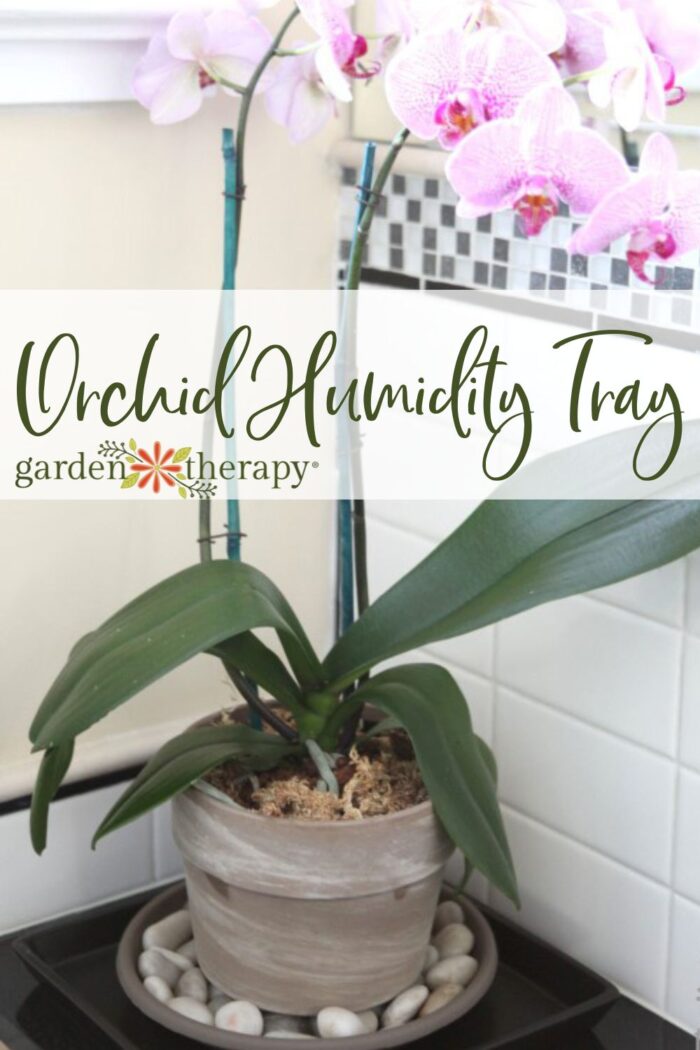
Do you have a temperamental orchid? If so, your environment may be the culprit! You may not notice it, but your home has a number of different microclimates in it. As you move from room to room, the light, temperature, and humidity can change drastically.
Not only that, but these variables can also jump up and down all day long. Creating the right conditions is the first step to having beautiful houseplants, including orchids. My favourite trick for keeping orchids happy is this DIY orchid humidity tray.
It’s funny, orchids are probably one of the most difficult houseplants to take care of and yet they are probably one of the most popular houseplants to have. You would think the two wouldn’t go together, but they are always available at grocery stores and garden centers. They are a beautiful bloom that just about everyone is attracted to so they often get picked up.
However, once an orchid is done blooming for someone, that usually marks the end of the houseplant. People are prone to overwatering orchids and even those who keep them alive can’t get an orchid to bloom again. So, how do we keep them alive and beautiful?
The Trick to Orchid Care
Watering orchids is a skill. Since they are prone to overwatering, the trick is to know when and how much to water your orchid. In nature, they do not grow in soil but by hanging on to bark of trees. This makes their root system a little different than the average plant. Instead, they absorb water in the humid air.
Now think of tropical plants that originated in the jungle or rain forest, where moisture hangs in the air. Those plants just love a humid space in your home. Kitchens and bathrooms can be a good space, as the steam from washing and cooking will fill the air they breathe. In most other rooms, especially in colder months when they are heated, the air is dry.
You are still going to want to water your orchid (approximately once a week), but a humidity tray will help provide moisture to your orchid without having them sit in water and potentially get root rot. Orchids like continued airflow but if the air is dry, it will in turn dry out the plant. Misting orchids and tropical houseplants can certainly help, but it needs to be done much more regularly than I can remember to do it.
Orchid trays are the perfect balancing act between providing moisture and not overwatering. It works by collecting water in a base while keeping the plant and roots suspended above it. As the water evaporates, the orchid benefits from the humidity. This DIY orchid humidity tray takes seconds to put together and even less time to maintain. Plus, it looks pretty, which is always a bonus in my books.
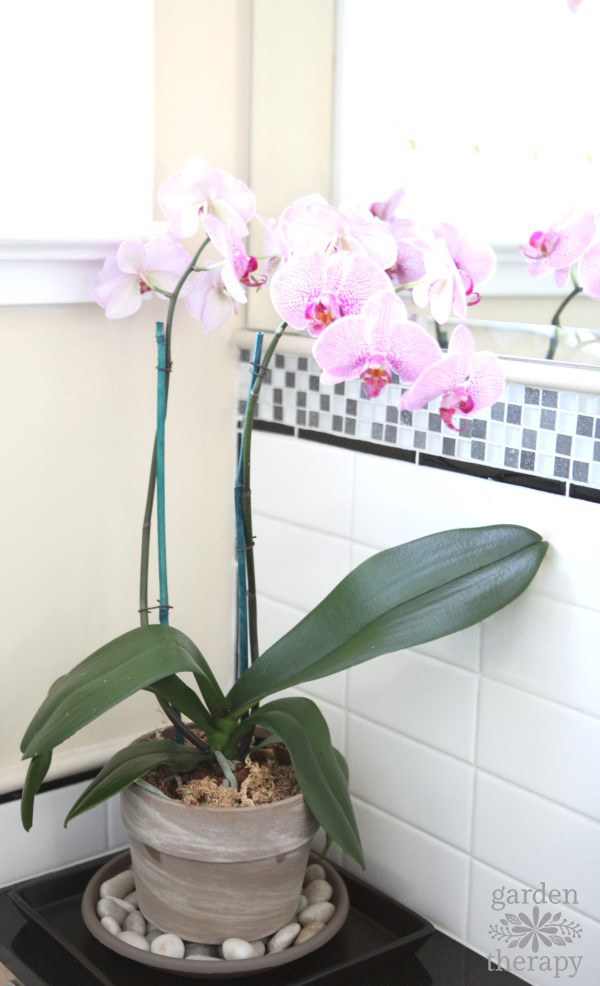
How to Make a Humidity Tray
This DIY orchid humidity tray will help the stunning blooms last longer and keep your plants much happier. And it can be used for a whole host of humidity-loving plants as well.
Materials
- Orchid pot
- Drip tray that is at least 1″ larger than the base of the plant pot
- Cork trivet (optional)
- Hot glue gun and glue (optional)
- Decorative stones
Make it!
This is not a difficult project to assemble, but the key is finding the right materials. Hopefully, you have your orchid in an orchid pot. If not, transplant it into a pot with large holes that promote air circulation.
As much as orchids like humidity, they do like to keep their roots dry. Many orchids have a plastic orchid pot inside of a decorative ceramic pot. Be sure that the decorative pot has drainage holes to avoid the roots sitting in any standing water.
Choose a drip tray to go below the orchid pot that is at least an inch larger than the base of the plant. A deep tray that is larger than the base will allow for more water and therefore more humidity. If you will be setting the pot on a wood table or other surface susceptible to water damage, I recommend gluing a round cork trivet to the underside of the tray.
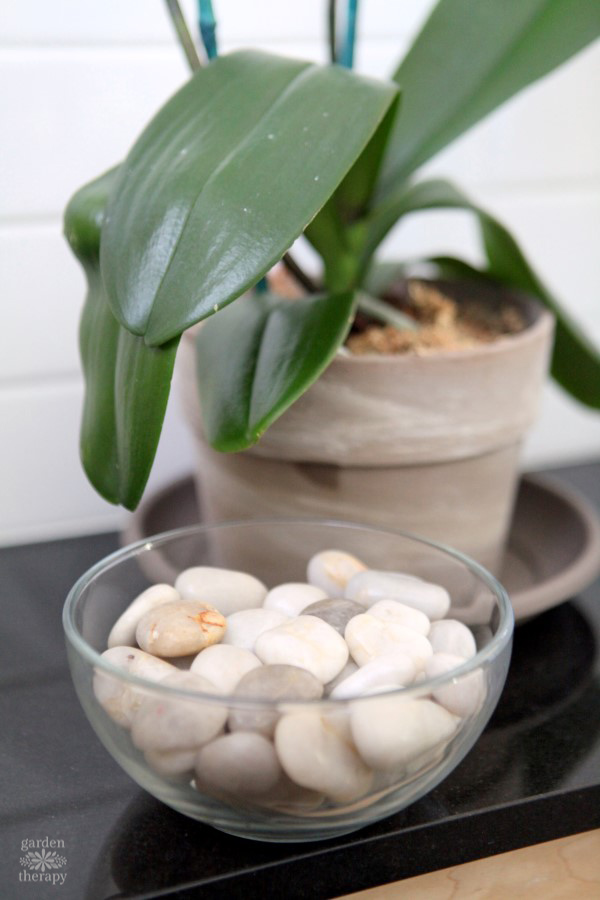
Fill the tray with decorative stones, pebbles, or glass stones. The material you choose is up to you, but larger stones (a half inch to an inch in size) will make the tray easier to clean and store more water.
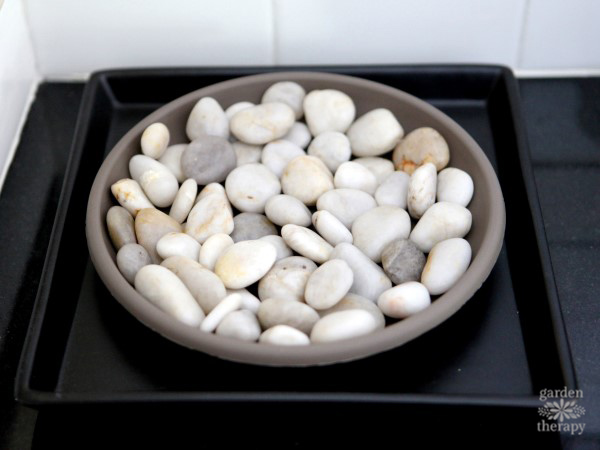
Finally, keep an eye on the water levels and top it up as it evaporates. Be sure to wash the tray and stones every month to keep it clean.
Give this humidity tray a try and see if you notice a change in your orchids. In addition to watering and humidity, there is a lot more that goes into a successful orchid such as using the right potting medium, lighting conditions, and fertilizer. You may be interested in my orchid care guide to learn more about this beautiful houseplant!
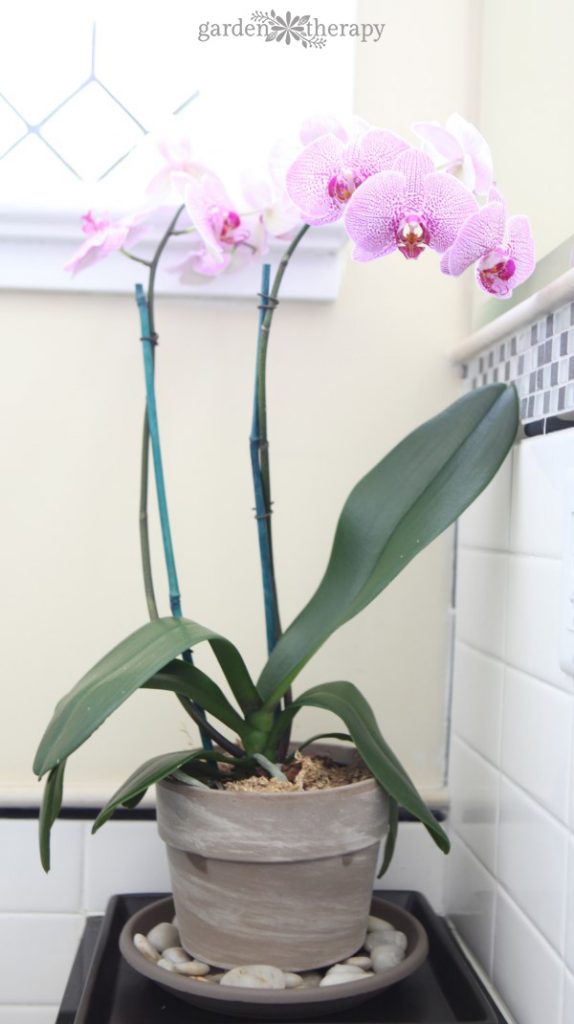
More DIYs to Try:
- DIY Air Plant Holder with Rock and Wire
- How to Make a Fresh Magnolia Wreath
- Find Peace of Mind in a Mini Succulent Zen Garden
- How to Create a Moss Terrarium
How to Make a Humidity Tray
Equipment
Supplies
- 1 Orchid pot
- 1 Drip tray that is at least 1″ larger than the base of the plant pot
- 1 Cork trivet optional
- Decorative stones at least .5"
Instructions
- If you plan on keeping this humidity tray on a wooden surface, start by hot-gluing a cork trivet to the bottom of the drip tray.
- Then, fill the tray with decorative stones, pebbles, or even glass stones. Opt for larger stones to keep the tray easier to clean and use.
- Add water to the tray, and set your orchid on top.
- Keep an eye on the water levels, and refill as needed. Make sure to clean the tray and stones at least monthly.

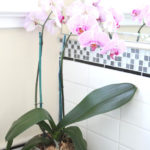
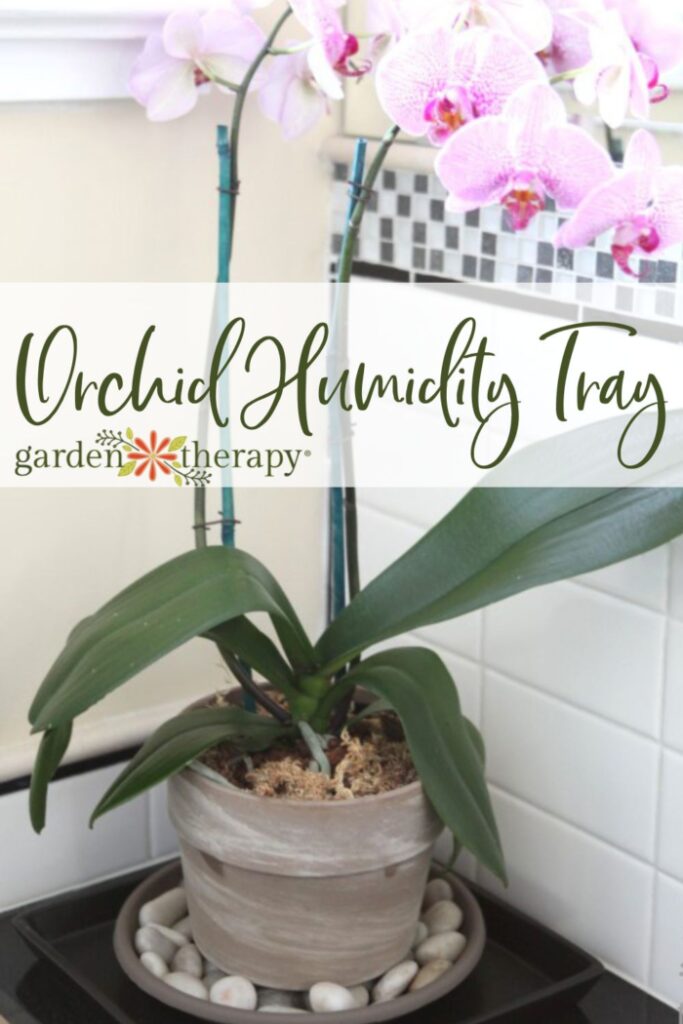
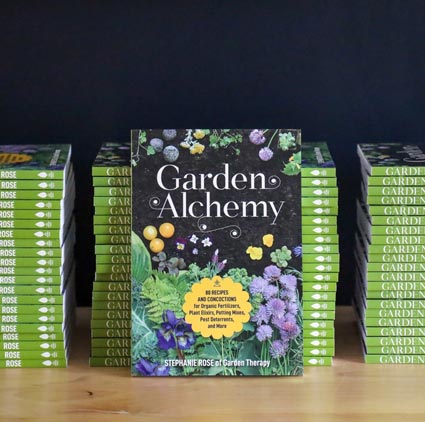


Hi. My orchid is in a pot without drainage holes. Does the humidity enter through the drainage holes or will the humidity reach the plant just from sitting on the humidity tray?
The humidity reaches the leaves via the surrounding air. You dont need airholes.
Great blog post on the love and care of Amaryllis! I have given at least one bulb to my Dad at Christmas for the past 20 years. He is now just shy of 94 and guess what he wants for Christmas?! This year I will try saving the bulb. Thank you!
Hi .Loved your blog..great info. My plant has lost all the roots and stems but somehow the leaves are thriving . There is a pair of leaves on 3 dead stems and they seem to be thriving. Do they need to be transplanted on orchid soil/ bark? If so, how do I do it without roots?
I have one like this. It even has blooms on it right now. Wondering how to repot it when blooms are gone with no roots to start with. Thanks.
We are getting ready to move into an apartment with no sun exposure, it will be surrounded by trees. We do live in FL. so humidity factor is good. Should I set my plant on the deck outside? I am concerned it will be shocked because it is leaving a large window with a lot of light.